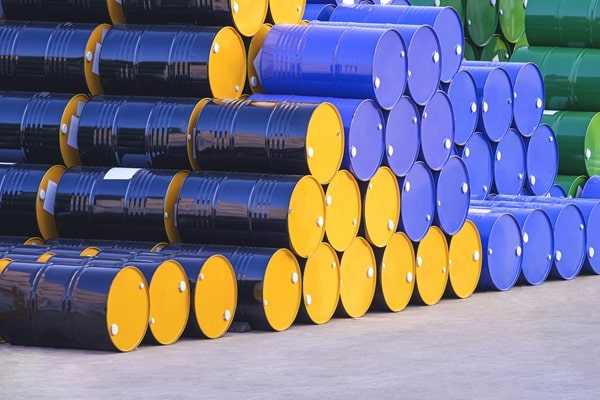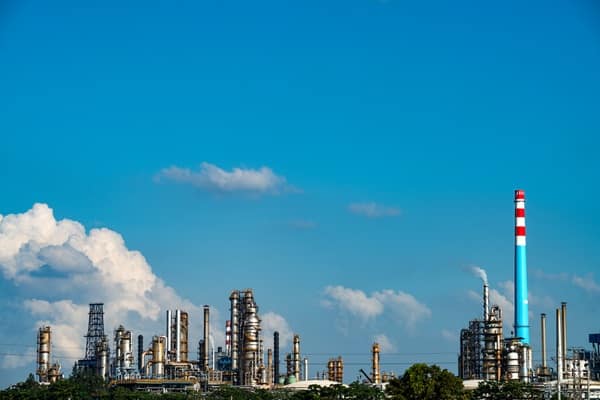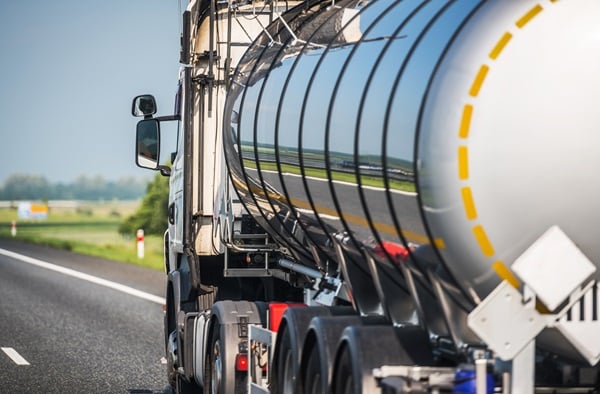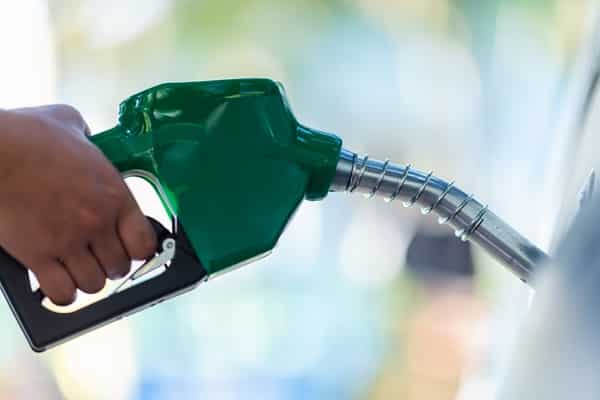With 2024 just getting underway, drivers witnessed a notable shift in gas prices, transitioning from the more affordable rates of winter to a gradual increase as the year progressed. This trend, influenced by a variety of factors, including global oil production decisions, crude oil prices, and seasonal changes, has prompted a closer examination of the dynamics behind gas pricing. The complexity of these elements offers a multifaceted perspective on why gas prices are on the rise, highlighting the significance of understanding these underlying causes. As such, this post delves into the intricacies of gas pricing, providing insights into the reasons behind the escalating costs that drivers are currently facing.
Contents
- 1 The Fundamentals of Gas Pricing
- 2 The Impact of OPEC+ Decisions on Gas Prices
- 3 Seasonal Trends Influencing Gas Prices
- 4 The Role of Crude Oil Prices in Gas Costs
- 5 Refinery Maintenance and Its Impact
- 6 Demand Fluctuations and Their Effects
- 7 Regional Variations in Gas Prices
- 8 Future Outlook and Predictions
- 9 Prepare Your Wallet for the Road of Rising Prices
The Fundamentals of Gas Pricing

The composition of gas prices is a reflection of various contributing factors, where crude oil stands out as the primary influencer. Approximately 57% of the price consumers pay at the pump is directly linked to the cost of crude oil. This significant proportion underscores the volatility of gas prices in response to changes in the oil market. Other elements such as taxes, distribution costs, and refining processes also play crucial roles, collectively shaping the final price.
In addition to crude oil prices, the structure of gas pricing incorporates operational costs and market dynamics. Refining costs, for instance, can vary significantly, influenced by the type of crude oil used and the complexity of the refining process. Distribution and marketing further add to the cost, encompassing the logistics of transporting fuel to various locations. Taxes, both federal and state, introduce another layer of variability, contributing to the regional differences in gas prices observed across the country.
The Impact of OPEC+ Decisions on Gas Prices

OPEC+ plays a pivotal role in the global oil market, with its production decisions directly affecting crude oil availability and prices. When OPEC+ countries agree to extend production cuts, as they did recently, it tightens the supply of oil, leading to an increase in prices. This decision is a strategic move to manage the balance between supply and demand, aiming to stabilize or increase oil prices to meet the economic goals of member countries.
The recent announcement by OPEC+ to extend production cuts sent immediate ripples through the oil market, subsequently impacting gas prices worldwide. This action reflects the consortium’s significant influence on global oil prices and underscores the interconnectedness of global markets. For consumers, this means that international agreements and policies among oil-producing nations can have a direct impact on their daily expenses, especially when it comes to filling up their vehicles.
Seasonal Trends Influencing Gas Prices

Seasonal changes play a significant role in the fluctuation of gas prices, with a notable increase observed during the spring. This pattern is primarily attributed to the enhanced demand for gasoline as the weather warms and driving activity increases. Additionally, the shift to summer-blend gasoline, which is more expensive to produce due to its lower volatility to meet environmental regulations, further escalates prices during this season.
The transition from winter to spring not only marks a change in consumer behavior but also signifies a shift in refinery operations. Refineries undergo maintenance and switch blends, temporarily reducing their output capacity. This reduction in supply, coupled with the increased demand, creates a perfect storm for rising gas prices. As such, drivers often experience a noticeable uptick in costs during this period, making it a predictable yet unwelcome annual phenomenon.
The Role of Crude Oil Prices in Gas Costs

Crude oil prices are the heartbeat of the gas pricing ecosystem, with their fluctuations having a direct impact on what drivers pay at the pump. Recent trends have shown a significant increase in crude oil costs attributed to various factors, including geopolitical tensions and changes in global demand. As these prices climb, the cost of producing and distributing gasoline rises, inevitably leading to higher prices for consumers.
Moreover, the volatility of the oil market means that any uncertainty can lead to swift price changes. Factors such as political instability in oil-producing regions, shifts in production strategies among major producers, and changes in global economic conditions can all cause crude oil prices to swing. These fluctuations are quickly reflected in gas prices, highlighting the sensitivity of fuel costs to the broader economic and political landscape.
Refinery Maintenance and Its Impact

Refinery maintenance, an essential process for the safe and efficient operation of oil refineries, significantly influences gas supply and prices. Scheduled mainly in the spring, this maintenance can lead to temporary reductions in gasoline production. As refineries shut down or operate at reduced capacity to undergo necessary upkeep and prepare for the switch to summer-grade fuels, the diminished output tightens the available supply of gasoline, contributing to price increases.
This period of maintenance is critical not only for operational safety but also for meeting regulatory requirements for summer gasoline blends. These blends are designed to evaporate less readily at high temperatures, thus reducing emissions that contribute to air pollution and smog during the warmer months. However, the transition and the associated downtime in refinery operations invariably lead to a constriction in gasoline supply, pressuring prices upward as the market adjusts to the reduced availability.
Demand Fluctuations and Their Effects

The demand for gasoline naturally fluctuates throughout the year, with significant increases observed during warmer months. This surge is largely due to more people traveling for leisure, especially during spring break and summer vacations, leading to an uptick in fuel consumption. The seasonal demand peaks correlate directly with rising gas prices, as higher demand pressures supply chains and amplifies the cost to consumers.
Historically, the transition into spring and summer represents a period of heightened activity and mobility, further exacerbated by the appeal of road trips and outdoor activities. This increased demand does not go unnoticed in the market, where even the anticipation of higher consumption can cause gas prices to rise. Retailers and suppliers adjust their pricing strategies in response to these demand forecasts, often preempting actual changes in consumption with price adjustments that reflect expected trends.
Regional Variations in Gas Prices

Gas prices in the United States are not uniform, varying significantly from one state to another due to a variety of factors, including taxes, supply chain logistics, and regional demand. States with lower taxes on gasoline often have lower prices at the pump, while those with higher taxes or specific environmental regulations may see higher costs. Additionally, the proximity to refineries and supply routes can affect regional price variations, with areas closer to these facilities typically enjoying lower prices due to reduced transportation costs.
For example, states like Mississippi, Colorado, and Texas have been reported to have some of the lowest gas prices, attributed to a combination of lower state taxes and closer proximity to oil refineries and distribution centers. Conversely, states with stringent environmental standards, like California, often face higher refining costs, contributing to higher prices at the pump. These regional disparities highlight the complex interplay of factors that determine local gas prices, underscoring the importance of understanding the local context when analyzing fuel costs.
Future Outlook and Predictions

The Energy Information Administration (EIA) provides forecasts and analyses that offer insights into future trends in gas prices. According to recent forecasts, gas prices are expected to average lower in 2024 compared to previous years, a prediction that hinges on factors such as stable or increasing refinery capacities and a gradual stabilization of crude oil prices. These projections suggest a potential easing of the price pressures drivers have been facing, offering a glimmer of hope for more manageable fuel expenses.
However, these predictions are subject to change based on a range of variables, including geopolitical developments, natural disasters, and significant shifts in global energy policies. The oil market’s volatility means that while forecasts can provide a general outlook, they are not guarantees. Consumers and industry stakeholders alike must remain informed and adaptable to navigate the uncertain landscape of gas prices effectively. This forward-looking perspective emphasizes the need for continuous monitoring of market conditions and policy developments to better anticipate and respond to future shifts in gas pricing trends.
Prepare Your Wallet for the Road of Rising Prices
As gas prices continue to rise, driven by a complex interplay of market forces and geopolitical decisions, the importance of staying informed cannot be overstated. Knowledge of the factors affecting fuel costs equips drivers with the tools to make smarter decisions, from optimizing fuel consumption to choosing the most cost-effective times to fill up. Embrace strategies that mitigate the impact of these increases on your wallet, and let awareness fuel your journey towards more economical and environmentally friendly driving habits.


